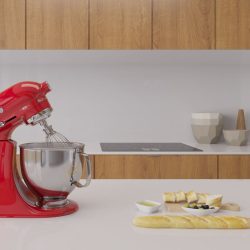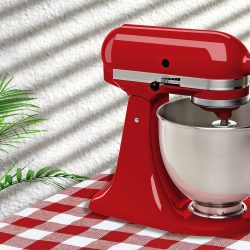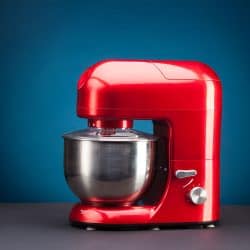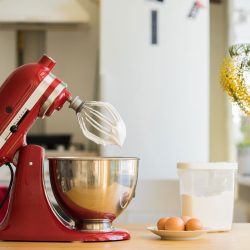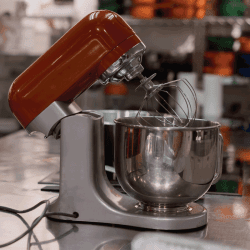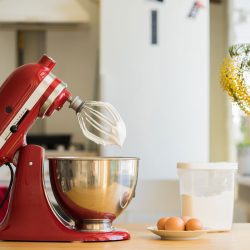There is no doubt that the KitchenAid mixer is convenient and easy to use. However, if you have to hand-wash all the attachments and bowls, it takes greatly away from the convenience of the product. If you've recently received a KitchenAid mixer or are thinking about getting one, you need to know if the attachments and bowls are dishwasher-safe. Don't worry; we've researched the topic and explain the answer in detail below.
KitchenAid attachments and bowls are dishwasher-safe. However, there is one exception. The wire whisk must be carefully hand-washed to help it maintain its shape and keep the alloy at the base from blackening. You also should never submerge the main body of any attachment in water or place it in the dishwasher.
Now that you know you can conveniently place your KitchenAid attachments and bowls in the dishwasher, you can buy all the accessories you want. After answering this question, we were curious about a few other things. Keep reading to learn what we found out!
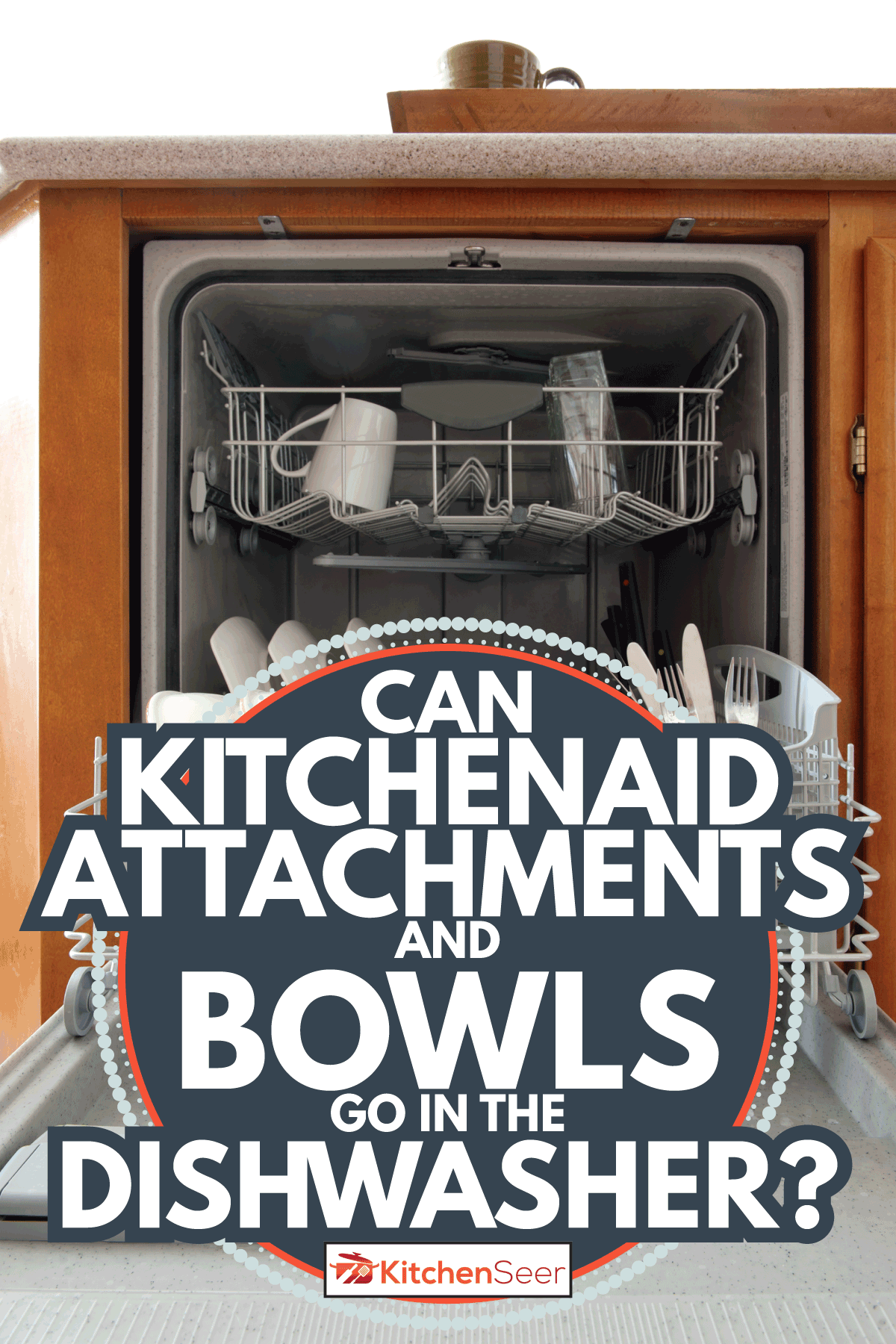
Can KitchenAid Attachments and Bowls Go in the Dishwasher?
Now that you have a KitchenAid mixer, you want to make sure you don't break it. One of the most asked questions is whether the bowls and attachments can go in the dishwasher. The answer is yes. Every bowl and attachment is dishwasher-safe, except the wire whisk. You should also refrain from submerging the body of any attachments into water. Doing so will cause the motor to malfunction.
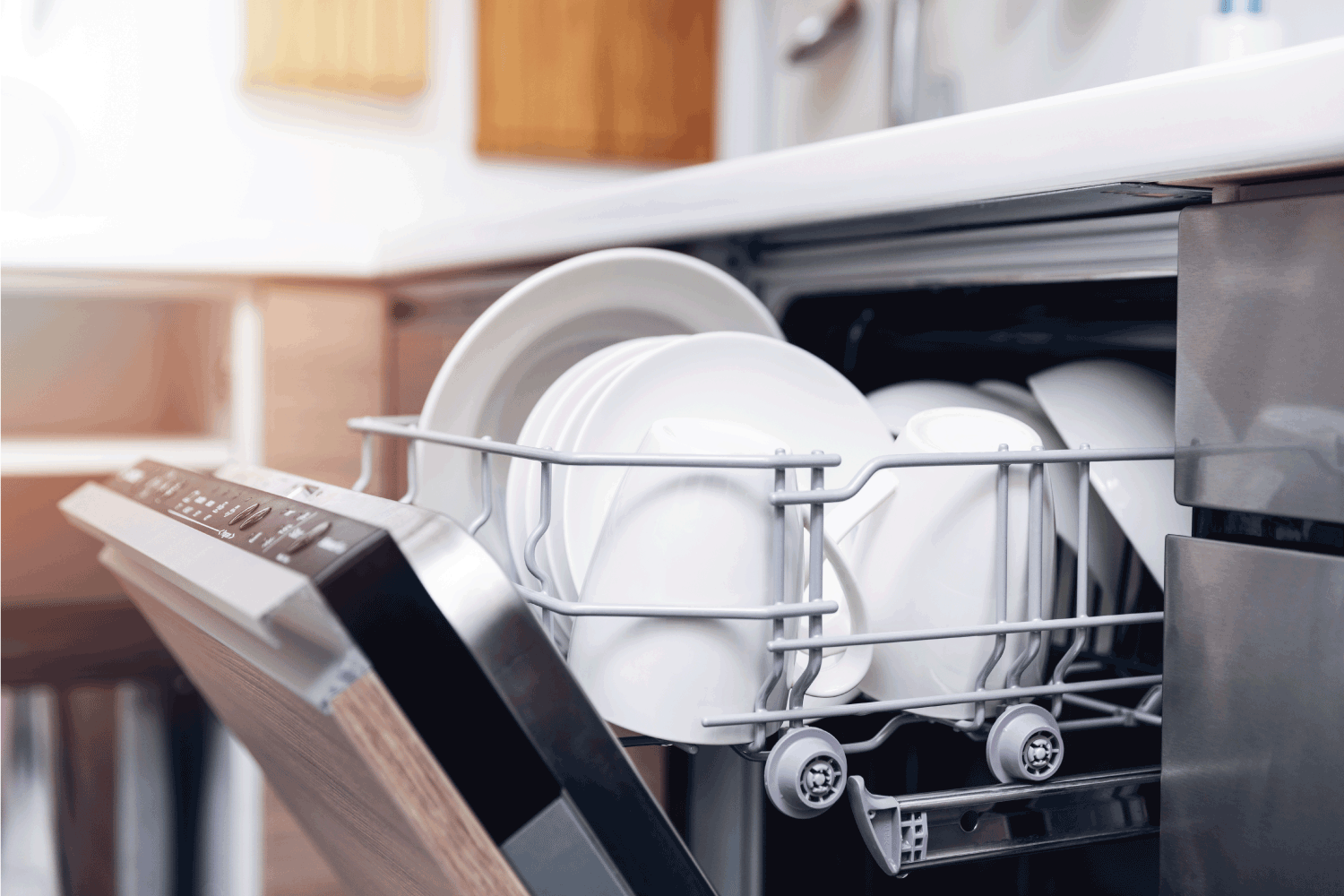
Are Glass and Metal Bowls Interchangeable?
In general, glass and metal bowls for KitchenAid mixers are interchangeable. However, this is only true to a certain degree. There are three different types of mixers: bowl-lift, tilt-head, and mini tilt-head. Bowls for the different types of mixers are not interchangeable. For example, you cannot use a bowl for a tilt-head stand in a bowl-lift stand or a mini tilt-head in a regular-sized tilt-head stand.
As long as all the bowls are made for the type of mixer you own, they are entirely interchangeable. Maybe you need a metal bowl for beating eggs, but you prefer to whip potatoes in a glass bowl. Maybe you're mixing something that would be better suited for a bowl with a spout and handle. No problem! Just keep them within the same family of mixers.
Check out this stylish bowl for a tilt-head mixer on Amazon.
Once you're finished with that bowl, you can make ice cream with the KitchenAid ice cream attachment.
You can find one for a tilt-head mixer by following this link to Amazon.
Are They Microwave Safe?
As with regular mixing bowls, some are microwave-safe while others are not. It will just depend on the material of the bowl. Many of the mixing bowls can go in the microwave. However, you should never place stainless steel or other types of metal bowls in the microwave.
Many glass and ceramic bowls are suitable for the microwave, but some plastic mixing bowls may not hold up to the excessive heat. Check the labels on each product before giving it a try.
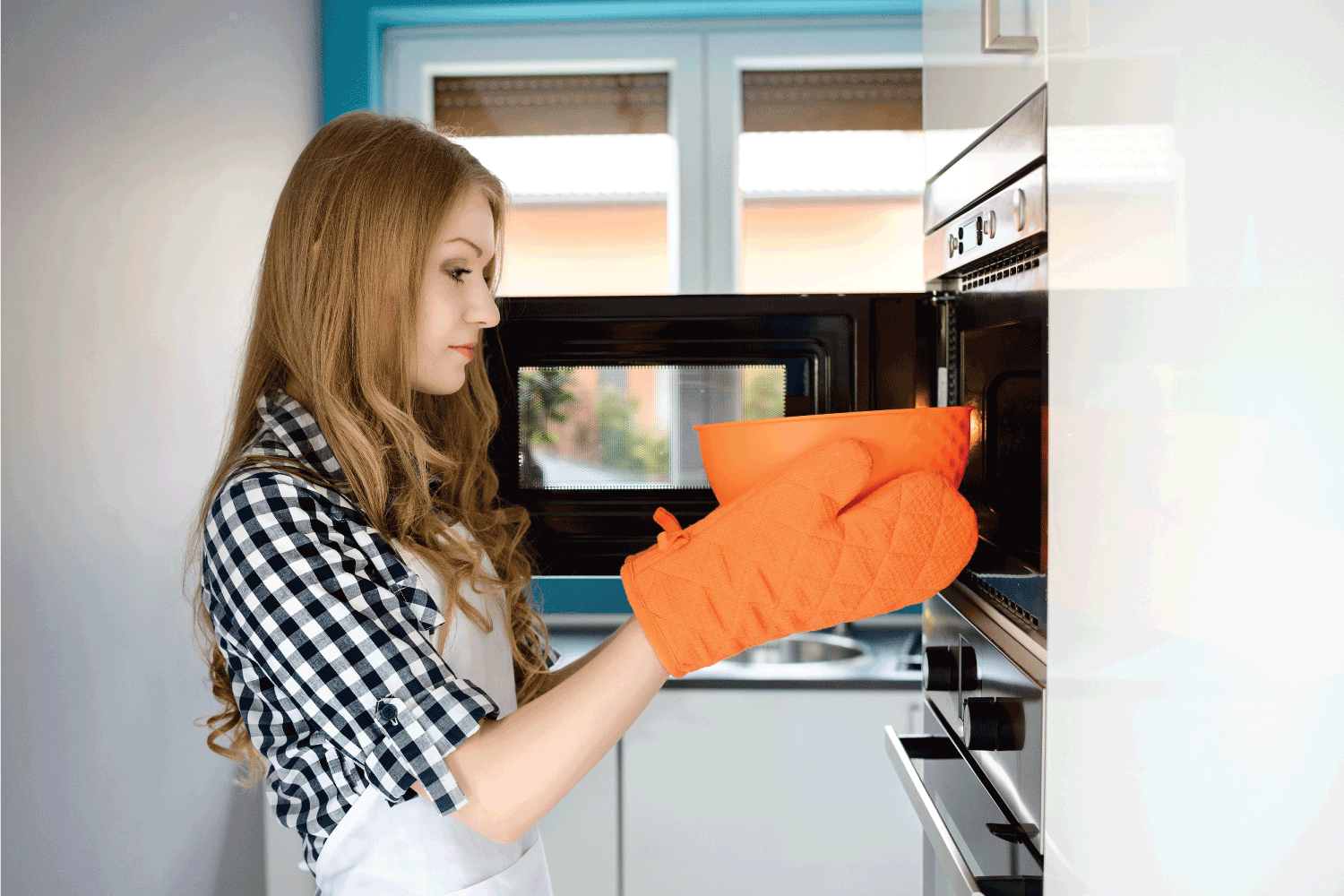
Does the Mixer Need to be Oiled?
While it may be tempting to oil your mixer, it comes with a lifetime of food-safe oil and grease. Not only is it possible to oil your machine too much, but you don't want to risk contaminating your food with oil that is not safe for consumption. If your machine is making a funny noise or not running correctly, contact customer support.
Why is my Mixer Leaking Oil?
Have you noticed oil dripping from your attachment or in the bottom of your mixing bowl? First off, don't panic if the oil made its way into your ingredients. All KitchenAid appliances use food-safe grease for lubrication. Now, a small amount of leakage is nothing to worry about. The grease can separate from the oil, causing leakage from the beater shaft.
There are two reasons your mixer may be leaking oil, and both are fixable. If you haven't used your appliance in a while, it's natural for the oil and grease to separate. Don't let your mixer go for long periods of time without use. Take it out periodically and let it run at high speed for approximately two minutes. Do not use ingredients during this process. Once it has finished running, clean any grease you may notice and store your mixer in its designated area.
Maybe your machine doesn't go long periods without use; contrarily, you use your device all the time. This can be another reason for oil leaks. It is perfectly fine to use your mixer as often as you like. However, it's not okay to let it overheat. Make sure you give it time to cool down between uses.
How to Deoxidize the Attachments
Some attachments, such as the metal whisks, are not dishwasher-safe. They also should not be allowed to soak in water. Doing so can cause the attachments to oxidize, forming a grey film. This film will transfer to your hands, clothes, and food. Although it is not harmful if ingested, it can be a nuisance.
To deoxidize your attachments, KitchenAid support recommends using a powder, such as Borax or Brillo, designed to eliminate oxidation. Pour the appropriate amount into hot water. Completely submerge the attachment into the hot water, letting it soak for about 20 minutes. Using a nylon scrubber, clean the attachments thoroughly, rinsing and drying as soon as you're finished.
If the above method does not suit you, clean your attachments with boiling water and vinegar. Pour enough water into your pot to completely submerge your mixer accessory. Add 2 to 3 cups of white vinegar and bring the mixture to a rolling boil. Now, it's time to put your attachments in the boiling water for approximately 20 minutes.
You will need to remove items while still hot; therefore, be careful not to burn yourself. Upon removal, wipe clean with a soft cloth. If there is any oxidation remaining, replace items in the boiling mixture for another 10 minutes and repeat the drying process.
Purchase the Brillo cleaning powder by following this link to Amazon.
If you prefer Borax or want to try them both, you can get it on Amazon.
Summary
Take a look at these awesome attachments for your KitchenAid mixer. Maybe you have other questions, such as which KitchenAid kneading speed is best or how to troubleshoot your KitchenAid dishwasher. You can find all that and more on our blog. We are here to help with all your kitchen-related questions.
KitchenAid mixers are incredibly convenient and versatile. You can do almost anything from making pasta and grinding meat to making homemade ice cream. To add to their convenience, all bowls and attachments are dishwasher-safe except the wire whisk. To be safe, always check the box to make sure since they are always creating new products. If problems arise, contact KitchenAid support if you cannot fix them with the simple steps covered above.





